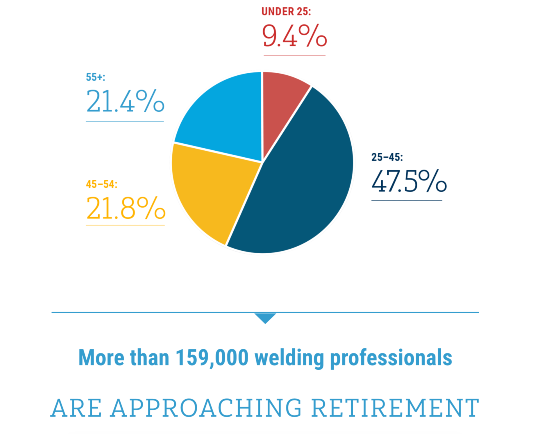U.S. Welding Workforce Faces Growing Demand Amid Skills Shortage

üAccording to data published on the U.S. Welding Force Data website, the U.S. welding sector is at a pivotal moment, with significant demand for skilled professionals amid a looming workforce shortage. As of 2024, approximately 771,000 people are working in the sector, but considering that the need for welders will increase every year, it is estimated that there will be a shortage of approximately 330,000 welders by 2028. Over 159,000 welders are nearing retirement, which will exacerbate the skills gap.
The employment gap for welding jobs needs to be filled annually by an average of 82,500 people between 2024 and 2028.
Wages in the welding industry reflect this high demand, with the median annual wage for welders around $53,500. Specialized roles such as welding inspectors, engineers, and underwater welders can earn significantly more, often exceeding $100,000 annually. The demand varies by region, with states like Texas, California, and Pennsylvania leading in employment numbers.
According to the report, the shortage is partly driven by the industry’s aging workforce, with 22% of current welders over the age of 55. This demographic shift has prompted an urgent need to attract younger workers to the field. Despite the appeal of high wages and job security, the welding profession struggles to shake off outdated perceptions that may deter new entrants.

To address the shortage, educational institutions and industry leaders are increasing efforts to promote welding careers through vocational training programs and partnerships with high schools. The introduction of modern technologies, such as automated welding systems and robotics, is also being explored to enhance productivity and address the labor gap. However, these technologies require existing workers to acquire new skills, adding another layer of complexity to workforce development.
In summary, while the US resource sector offers promising career opportunities, particularly in high-demand states and specialties, the sector must overcome significant challenges in workforce renewal and skills development to sustain its growth trajectory.
For more in-depth statistics and further information, please visit Welding Workforce Data.


Discussion